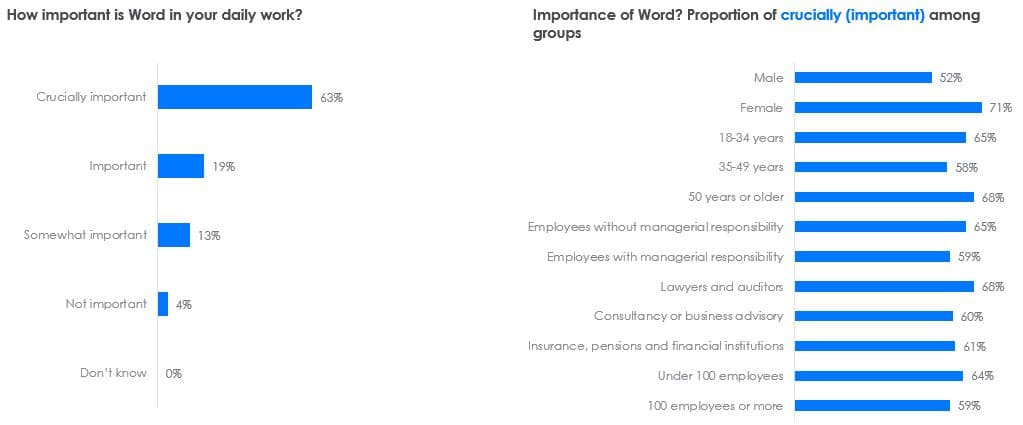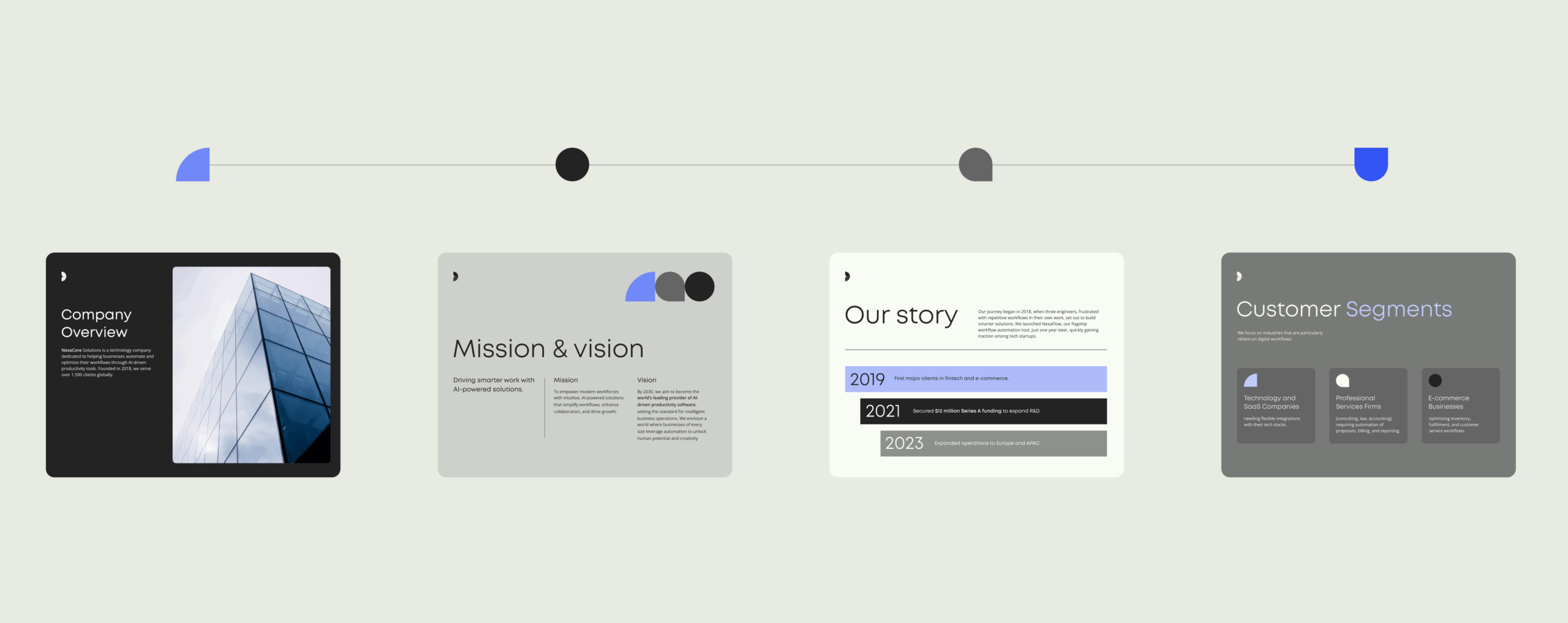5 stats about using Word and PowerPoint at legal and financial firms

If you work in a financial or legal firm, you’ve almost definitely used Microsoft Office applications such as Word and PowerPoint.
In fact, there’s a 90% chance that you use Word at least once every day. But what is the average overall program usage of each profession and employee position? And how do people rate their experiences and productivity in these Office applications?
To answer these questions, SkabelonDesign, a leading company in the implementation of visual identities and template solutions in Microsoft Office, commissioned Epinion, a top research company, to conduct a Microsoft Office market analysis report.
The report uses data from 227 telephone interviews of employees at private financial and legal companies. The interviewees are all professionals in legal, auditing, consulting, insurance, financial or pension sectors in Denmark. The sample includes various employee positions, company branches, SMEs and enterprise, and different regions of companies.
Want to read the full report? Download it for free:
Here are some key findings of the report:
1. 9 out of 10 financial and legal employees use Word every day
Word usage was found to be consistently high in all company sectors and different interviewee demographics. However, overall, lawyers and auditors were found to use Word most often, with 56% saying they use Word for over 3 hours a day.
2. 95% of interviewees consider Word to be important in their daily work
The importance of Word in respondents’ daily work fits with the previous statistics on the usage of the program. 82% of interviewees find Word to be an “important” or “crucially important” part of their daily work, with employees in law and auditing attributing the greatest importance to it. Additionally, 13% find it to be “somewhat important”, while only 4% find Word to be an unimportant part of their daily work. Despite the importance of Word in their daily work, 11% of all interviewees find that they spend more time than planned working with Word, especially those working in consultancy or advisory firms.

3. 1 out of 3 financial and legal employees use PowerPoint daily
PowerPoint usage was found to be significantly higher for employees working in consulting and business advisory firms, with 49% stating they use the program for over an hour every day. Overall, the following takeaways were found regarding PowerPoint usage:
- 16% use PowerPoint for 1-2 hours per day.
- 54% share PowerPoint presentations externally (to customers or partners).
- 81% of employees who share PowerPoint presentations “often” or “now and again” have managerial responsibilities.
4. 63% of interviewees consider PowerPoint to be important in their daily work
While PowerPoint isn’t used as often as Word in financial and legal sectors, almost two-thirds of employees still view it as an important tool. 43% of interviewees find PowerPoint to be an “important” or “crucially important” part of their daily work, within consulting or business advisory services attributing the most importance to it. Around 1 in 4 who find PowerPoint to be “crucially important” are employees with a managerial role.
5. Over half of people who use PowerPoint use a template when they work
Using templates in PowerPoint and Word is common in the financial and legal sectors. 55% of PowerPoint users rely on a template, as do 50% of Word users. It is therefore important that Word and PowerPoint templates are consistently on-brand and up-to-date across all departments and office locations, especially as over half of employees who participated in the study share PowerPoint presentations externally, and over three-quarters share Word documents with customers or partners.
Templafy makes it easy for employees to access your company’s most up-to-date document and presentation templates, images, logos and text elements right within Word and PowerPoint. Get in touch with us to find out how we can assist your document and presentation creation process.


